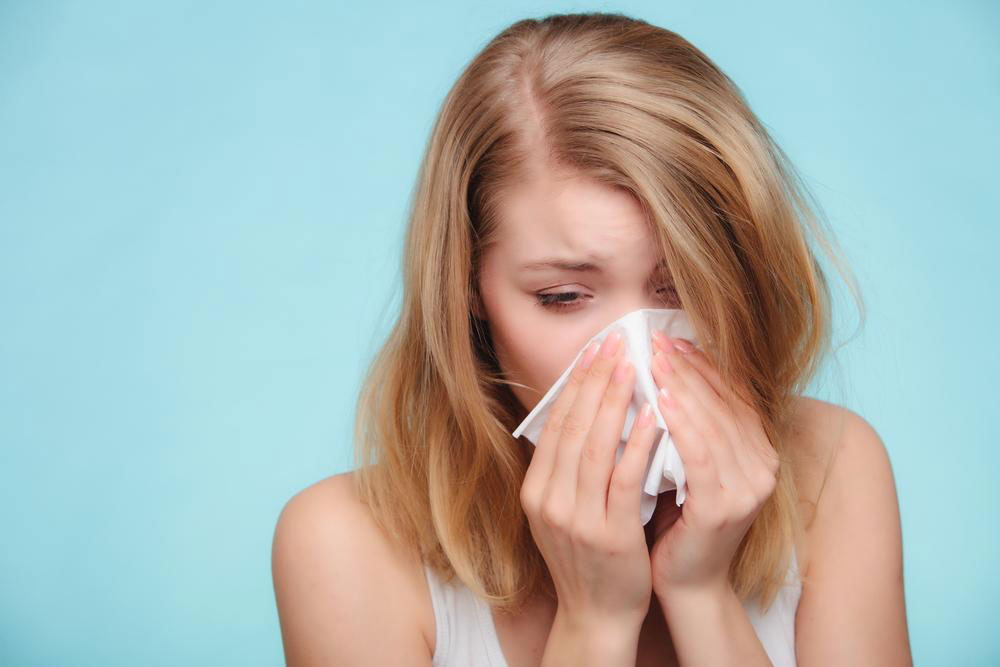Comprehensive Guide to Fever and Cold Sore Management: Symptoms, Causes, and Effective Remedies
This comprehensive guide explores the causes, symptoms, and treatments for fever and cold sores. Learn how to accurately measure temperature, identify symptoms, and apply effective home remedies. Understand when to seek medical care and how to prevent these common ailments with practical tips. Stay informed about managing fever and cold sores for better health and quick recovery.

Comprehensive Guide to Fever and Cold Sore Management: Symptoms, Causes, and Effective Remedies
Understanding how our body responds to illness is vital for maintaining good health, especially when it comes to common infections like fevers and cold sores. Fever is a natural defense mechanism that alerts us to underlying health issues, while cold sores, caused by the herpes simplex virus, are a common nuisance that can be managed effectively. This comprehensive guide delves into the causes, symptoms, and treatment options for fever and cold sores, empowering you to take appropriate action and seek medical care when necessary.
What Is Fever and Why Does It Occur?
Fever, medically termed pyrexia, is characterized by an elevation in body temperature beyond the normal range. Typically, a body temperature exceeding 100.4°F (38°C) indicates a fever. It often occurs as a response to infections, such as bacterial or viral illnesses, but can also result from other causes like heat exhaustion, inflammatory conditions, or certain medications. Recognizing the signs of fever and knowing how to measure it accurately are crucial steps in managing your health.
How to Measure Body Temperature Correctly
Accurate measurement of body temperature is the first step in assessing your health status. Commonly used methods include oral, rectal, and axillary (armpit) readings. Each method has its own specific technique:
Oral Temperature: Place a digital thermometer under the tongue and close your mouth around it. Keep it steady for about 30 seconds until the reading stabilizes.
Rectal Temperature: Insert a lubricated digital thermometer gently into the rectum, about 1 inch into infants and small children. This method tends to provide the most accurate readings.
Armpit (Axillary) Temperature: Place the thermometer under the armpit, ensuring contact with the skin, and hold the arm close to your body for about 10 minutes.
Be sure to clean your thermometer before and after use to maintain hygiene. Always read the manufacturer's instructions for specific guidance.
Interpreting Fever Temperature Readings
Understanding what your temperature readings signify helps determine whether you need medical attention:
Normal Body Temperature: Usually ranges between 97°F to 99°F (36.1°C to 37.2°C).
Fever (Pyrexia): Temperatures above 100.4°F (38°C).
High Fever: Temperatures exceeding 102°F (38.9°C) require closer monitoring and possible medical consultation.
Critical Fever: 104°F (40°C) or higher may indicate a medical emergency.
Common Causes and Symptoms of Fever
Fever can be caused by a variety of factors, most notably infections. Besides the rise in temperature, common symptoms include sweating, chills, body aches, and fatigue. Recognizing these signs early can help you take timely action:
Viruses such as influenza and common cold
Bacterial infections like pneumonia or urinary tract infections
Heat stroke or sunstroke
Inflammatory conditions such as rheumatoid arthritis
Understanding Cold Sores: Causes and Symptoms
Cold sores, also known as fever blisters, are caused by the herpes simplex virus (HSV). Once infected, the virus remains dormant in nerve cells but can reactivate under certain conditions. Cold sores typically appear around the lips, mouth, or face, causing uncomfortable blisters and sores.
Symptoms of cold sores include tingling, itching, and burning sensations before blisters form. The blisters usually break open, crust over, and heal within 7 to 14 days. Triggers for reactivation include stress, illness, sun exposure, and hormonal changes.
Home Remedies and Treatments for Fever and Cold Sores
Managing fever and cold sores effectively at home can provide relief and accelerate healing. Some proven remedies include:
Cold Compresses: Applying ice or cold packs to the forehead or affected areas can reduce fever and soothe discomfort from cold sores.
Hydration: Drinking plenty of fluids such as water, herbal teas, and clear broths helps prevent dehydration during a fever.
Over-the-Counter Medications: Fever reducers like acetaminophen or ibuprofen can lower temperature and alleviate pain.
Topical Treatments for Cold Sores: Applying antiviral creams or patches can hasten healing and reduce itching.
Natural Remedies: Some natural options that may help include tea tree oil, milk compresses, garlic, and licorice root, which possess antiviral and anti-inflammatory properties.
It's important to note that persistent or high-grade fevers, or recurrent or severe cold sores, require medical attention. Always consult healthcare providers for personalized treatment plans and serious symptoms such as difficulty breathing, high fever unrelieved by medication, or signs of secondary infection.
When to Seek Medical Advice
While mild fevers and cold sores often respond well to home care, certain situations demand prompt medical attention:
If your fever exceeds 104°F (40°C) or lasts longer than three days.
If cold sores are spreading or worsening, and do not respond to over-the-counter treatments.
Signs of bacterial infection such as increased pain, swelling, or pus.
Symptoms like difficulty breathing, chest pain, severe headache, or persistent vomiting.
Preventive Measures and Tips
Preventing fever and cold sores involves maintaining a healthy immune system and avoiding known triggers. Effective strategies include:
Practicing good hygiene, such as frequent handwashing and avoiding sharing personal items.
Using sunscreen on lips and face to prevent cold sore reactivation.
Managing stress through relaxation techniques and adequate sleep.
Eating a balanced diet rich in vitamins and minerals to boost immunity.
Staying well-hydrated and dressing appropriately in hot weather to prevent heat-related illnesses.
Understanding the mechanisms of fever and cold sores, recognizing early symptoms, and applying appropriate remedies can help you stay healthy. Regular medical check-ups and prompt treatment can prevent complications and promote swift recovery.





